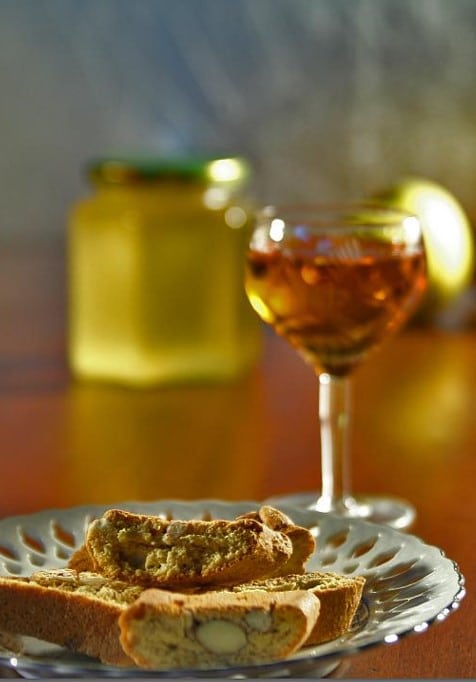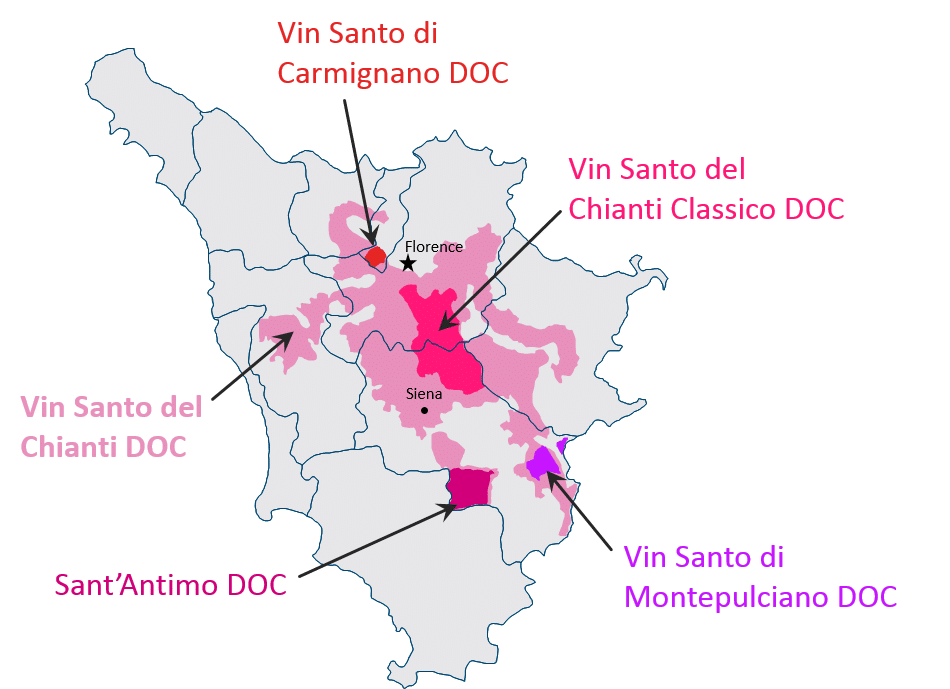Search
Menu
 The most famous dessert wine of Italy is Vin Santo. Vin Santo, sometimes spelled Vino Santo, is a passito wine made by fermenting juice from dried grapes very slowly for a period of years in small, sealed wooden barrels. It is usually sweet, but if it ferments long enough, it can be dry. Vin Santo is classically served with hard biscotti biscuits (left).
The most famous dessert wine of Italy is Vin Santo. Vin Santo, sometimes spelled Vino Santo, is a passito wine made by fermenting juice from dried grapes very slowly for a period of years in small, sealed wooden barrels. It is usually sweet, but if it ferments long enough, it can be dry. Vin Santo is classically served with hard biscotti biscuits (left).
Vin Santo wines are typically blends of an assortment of local varieties. Trebbiano is the variety most often called for in Vin Santo, but other varieties such as Malvasia are blended in.  Made with white varieties, Vin Santos are most often gold in color. Occhio di Pernice, meaning “Eye of the Partridge,” is a rosato version of Vin Santo made with red grapes, usually Sangiovese.
Made with white varieties, Vin Santos are most often gold in color. Occhio di Pernice, meaning “Eye of the Partridge,” is a rosato version of Vin Santo made with red grapes, usually Sangiovese.
Many different areas make Vin Santo wines, but they are most prevalent in central Italy, especially Tuscany. Twenty-six of Tuscany’s 41 DOCs make a Vin Santo, as do a few DOCs in other regions. There are no DOCGs or IGPs whose regulations include a wine called Vin Santo—although there are some passito wines at both levels.
 In Tuscany, there are four DOCs that make only Vin Santo. Each of these corresponds to a major red-wine-only DOCG zone, which do not themselves allow Vin Santo production. The largest of these DOCs are Vin Santo del Chianti and Vin Santo del Chianti Classico. The other two are Vin Santo di Carmignano and Vin Santo di Montepulciano. Vin Santo from Montalcino is produced under the banner of Sant’Antimo DOC.
In Tuscany, there are four DOCs that make only Vin Santo. Each of these corresponds to a major red-wine-only DOCG zone, which do not themselves allow Vin Santo production. The largest of these DOCs are Vin Santo del Chianti and Vin Santo del Chianti Classico. The other two are Vin Santo di Carmignano and Vin Santo di Montepulciano. Vin Santo from Montalcino is produced under the banner of Sant’Antimo DOC.